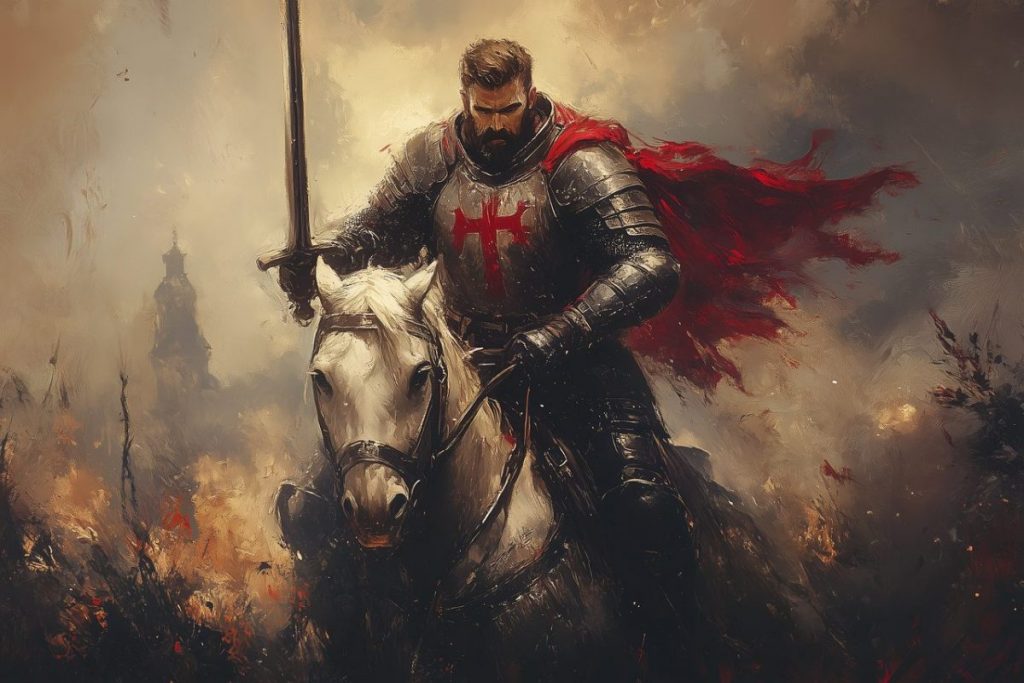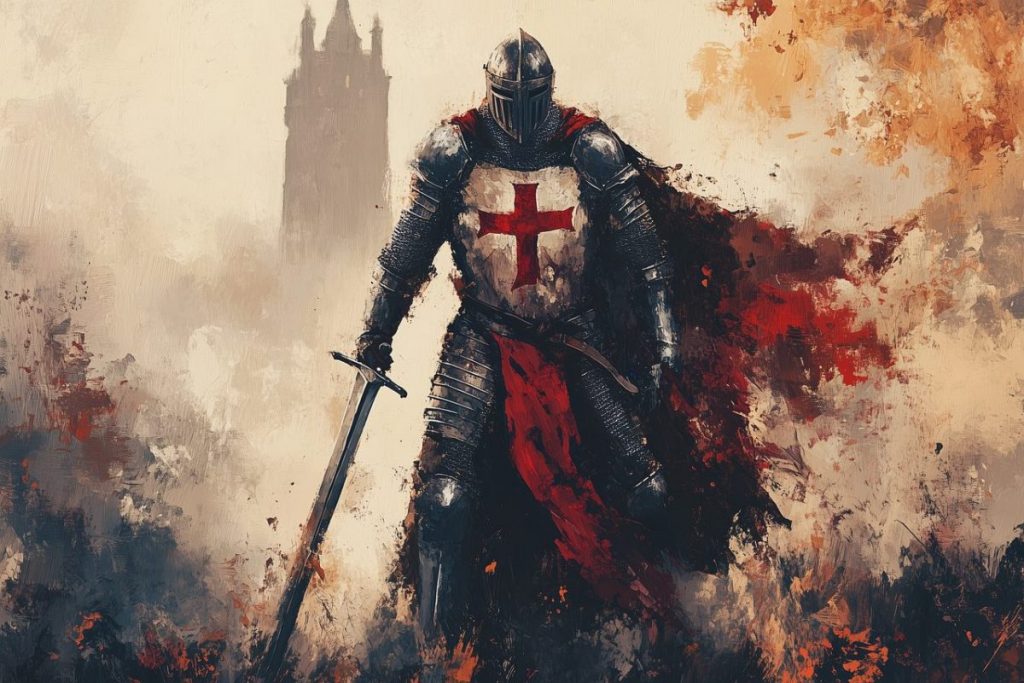 St George’s Day is celebrated on April 23rd each year, as a day to remember St George, the patron saint of England. He’s best known for the legendary tale where he slays a dragon to save a princess. The story reads like a classic fairy tale, but the legend of St George has stood the test of time because it represents courage, justice and the triumph of good over evil. Read on to learn more about the special day, explore related vocabulary and enjoy a fun St George’s Day EFL lesson!
St George’s Day is celebrated on April 23rd each year, as a day to remember St George, the patron saint of England. He’s best known for the legendary tale where he slays a dragon to save a princess. The story reads like a classic fairy tale, but the legend of St George has stood the test of time because it represents courage, justice and the triumph of good over evil. Read on to learn more about the special day, explore related vocabulary and enjoy a fun St George’s Day EFL lesson!
Who Was St George?
Despite being strongly associated with England, St George wasn’t actually English. He was a Roman soldier, born in what is now Turkey, around the year 280 AD.
He became famous for standing up for his Christian beliefs, even though it cost him his life. Over time, stories of his courage spread, and he was made the patron saint of England in the Middle Ages.
The most famous story about him is the legend of St George and the Dragon. In this tale, a town is being terrorised by a dragon and to stop it, the people offer the dragon sheep as a gift. Eventually the people even offer it humans! One day, the princess is chosen as a sacrifice to the dragon, but brave St George fights the dragon, defeats it, and saves her life.
The story is a powerful symbol of bravery, heroism and good versus evil.
Who Celebrates St George’s Day?
St George is the patron saint of several countries, not just England. Some places that also celebrate St George’s Day:
England – The main country associated with the day
Georgia – The country is named after St George
Portugal – St George is honoured in Portugal as a symbol of protection and courage.
Catalonia (in Spain) – Here, the day is called La Diada de Sant Jordi, and it’s a romantic day where people give books and roses to each other
Ethiopia – St George is a national hero and the patron saint of the Ethiopian Orthodox Church
Russia – St George is one of their military saints
How is St George’s Day Celebrated?
In England, St George’s Day is more low-key than, say, St Patrick’s Day in Ireland, but you might see:
Flags with a red cross on a white background (the St George’s Cross)
People wearing red roses
Parades or events in town centres
School projects and lessons about England’s history
Traditional English food, like roast dinners, pies or scones
In Catalonia, it’s a bit like Valentine’s Day. Men give roses to women, and women give books to men. These days, everyone gives both!
Vocabulary & Phrases for St George’s Day
Here are some key words and phrases you might come across when talking about St George’s Day:
- Saint – A holy or virtuous person recognised by the Christian church
- Patron saint – A special protector or guardian for a country, group or activity
- Legend – A traditional story, often not proven true, but passed down over time
- Dragon – A mythical, fire-breathing creature usually seen in stories or folklore
- Heroism – Brave or noble actions, especially in difficult situations
- Defeat (verb and noun) – To win against someone or something, often in battle
- Symbol – Something that stands for or represents an idea or quality
- To celebrate (verb) – To mark an event with fun, joy or ceremony
- Tradition – A custom or belief passed down through generations
- To slay (verb) – An old-fashioned way of saying “kill”, especially a monster or dragon
Lesson Ideas for St George’s Day
If you’re planning a St George’s Day EFL lesson, here are some activity ideas:
1. Reading & Discussion
Give students a simplified version of the St George and the Dragon legend as a reading task. Ask them to discuss themes like bravery, good versus evil, myths or the idea of national identity.
2. Vocabulary Match
Use the words from the vocabulary list and get students to match them to definitions or pictures.
3. Cultural Comparison
Ask students: “Do you have a national day like this in your country?” and compare how different cultures celebrate heroes or legends.
4. Creative Writing
Teachers can invite students to write their own modern-day dragon story or imagine they’re St George in the 21st century. Consider metaphor and allegory. What would the “dragon” be now? Maybe the “evil” could be a computer virus, pollution, or even a mean teacher at school or a grumpy boss at work!
5. Flag and Symbol Activities
This activity could help students learn about the significance of the St George’s Cross or discuss other national symbols.
Share your thoughts
- Had you heard of St George’s Day before reading this page?
- What’s your favourite part of the St George and the Dragon story and why?
- Does your country have a national hero or special day like this? What do people do to celebrate?
- If you were writing a modern version of the dragon story, what would the ‘dragon’ be today?
- Which words or phrases from the vocabulary section were new to you?
- Do you think legends and stories like this are still important today? Why or why not?
- What would you like to add to a St George’s Day EFL lesson?

